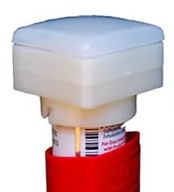 The Spiroscout Inhaler Tracker by Asthmapolis is a small device that attaches to the top of an inhaler. The unit is GPS capable so that each time the inhaler is used, the GPS unit records the time the medication was taken and the patients location.
The Spiroscout Inhaler Tracker by Asthmapolis is a small device that attaches to the top of an inhaler. The unit is GPS capable so that each time the inhaler is used, the GPS unit records the time the medication was taken and the patients location.
What a great tool to not only help asthmatics control their disease, but provide physicians with great real-time data. I suppose the next step would be to integrate devices like this into the electronic health record similar to what has been done with me blood glucose and blood pressure monitoring devices.
The Spiroscout Inhaler Tracker is used in conjunction with the Asthmapolis mobile diary to help patients map and track their asthma symptoms, triggers and use of medications.
(more…)

